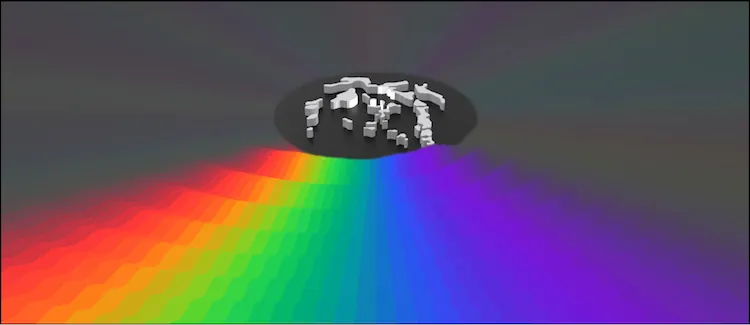
Introducing Acoustic Rainbows: A Breakthrough in Sound Technology
2025-07-10
Author: Wei
A Revolutionary Discover in Sound Decomposition
In a stunning advancement, Danish researchers have unveiled the acoustic equivalent of a rainbow, a groundbreaking structure capable of decomposing sound into its core frequencies in open space. This innovative feat, achieved by the team at Danmarks Tekniske Universitet (DTU), paves the way for devices that can precisely emit or receive targeted sound frequencies.
Understanding Acoustic Rainbows
Like their optical counterparts, which split white light into a spectrum, acoustic rainbows spatially break down sound waves based on frequency. While optical phenomena are widely recognized, acoustic rainbows, which determine how different frequency waves travel in separate directions, remain less familiar. Previously, these effects were limited to confined environments, using setups like resonant structures, waveguides, and acoustic circulators.
Nature’s Blueprint: The Pinnae of Mammals
Interestingly, natural structures exist that already perform spectral decomposition of sound—most notably, the outer ear or pinnae of animals like bats and whales. These intricate shapes help mammals localize sounds by creating complex interference patterns through sound wave scattering. Until now, attempts to replicate these biological designs in labs had seen limited success.
A New Design Technique Emerges
The game-changing study, co-led by Rasmus Ellebæk Christiansen and Efren Fernandez-Grande at DTU, utilized a cutting-edge method called computational morphogenesis or topology optimization. Detailed in the journal *Science Advances*, this innovative technique allowed the researchers to carefully manipulate sound-reflecting materials within a defined space to create customizable sound emission patterns across specific frequency ranges.
Harnessing Computational Power for Sound Innovation
Christiansen attributes the success of this technique to recent leaps in computational power, enabling large-scale sound modeling. Coupled with advanced 3D printing technologies, the researchers enjoyed unprecedented design flexibility, allowing them to create metamaterials and complex structures once thought impossible.
Unlocking New Possibilities in Acoustic Design
With metamaterial designs echoing the pinnae's natural structures, Christiansen foresees the possibility of developing acoustics that have never existed before. One exciting idea is creating materials that reflect high frequencies differently than low ones—scattering high frequencies while directing low ones toward absorbing surfaces. Such advancements could lead to the development of sophisticated acoustic lenses that control how various sound frequencies are dispersed in space.
Looking Ahead: The Future of Acoustic Structures
As the research progresses, the team aims to evolve from their current two-dimensional designs to fully three-dimensional structures, significantly enhancing design freedom and complexity in sound field manipulation. Christiansen believes this will lead to even more advanced spatio-spectral control of sound, offering endless possibilities for the future of audio technology.


 Brasil (PT)
Brasil (PT)
 Canada (EN)
Canada (EN)
 Chile (ES)
Chile (ES)
 Česko (CS)
Česko (CS)
 대한민국 (KO)
대한민국 (KO)
 España (ES)
España (ES)
 France (FR)
France (FR)
 Hong Kong (EN)
Hong Kong (EN)
 Italia (IT)
Italia (IT)
 日本 (JA)
日本 (JA)
 Magyarország (HU)
Magyarország (HU)
 Norge (NO)
Norge (NO)
 Polska (PL)
Polska (PL)
 Schweiz (DE)
Schweiz (DE)
 Singapore (EN)
Singapore (EN)
 Sverige (SV)
Sverige (SV)
 Suomi (FI)
Suomi (FI)
 Türkiye (TR)
Türkiye (TR)
 الإمارات العربية المتحدة (AR)
الإمارات العربية المتحدة (AR)